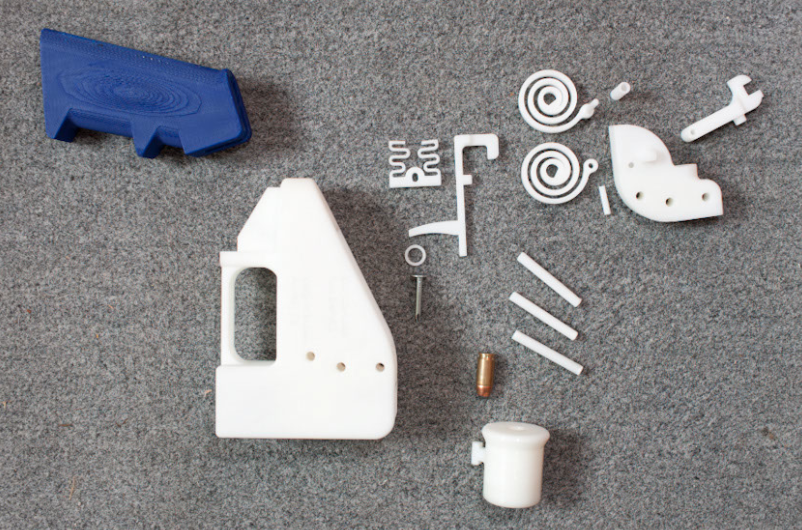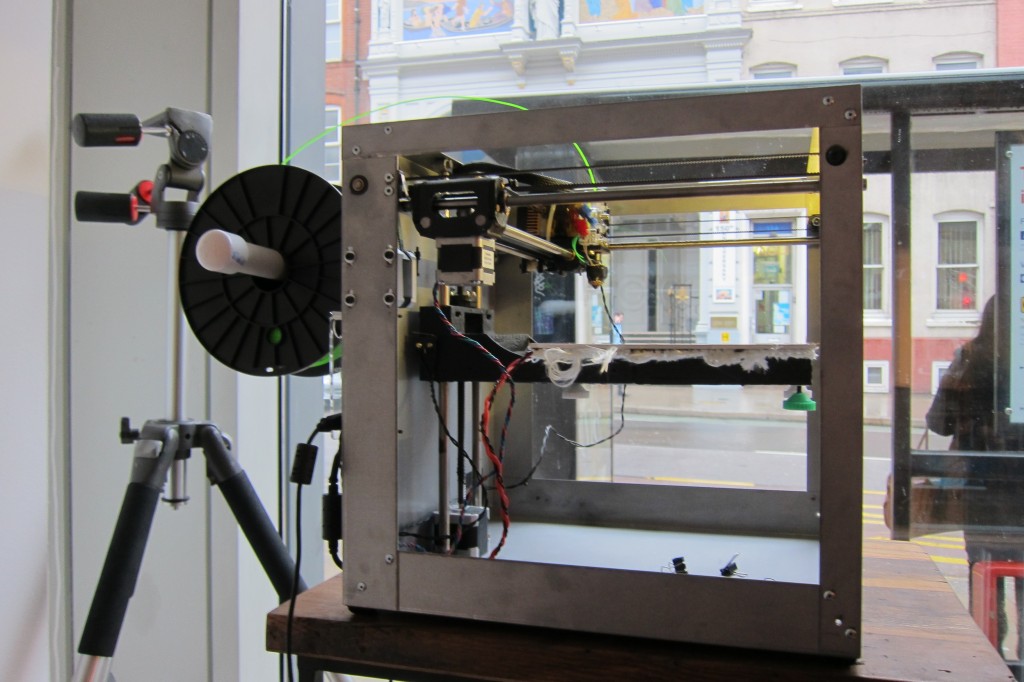By Nicole Rutherford

Transport Canada is worried about terrorists using 3D-printed weaponry to hijack airplanes. Documents obtained through access to information show that since 2013 government officials have been tracking an American website, Defense Distributed, for crafting the first entirely 3D-printable gun and then uploading the digital instructions online.
“On May 8th, 2013 Defense Distributed successfully trialed [a gun called] ‘The Liberator’ in Texas,” reads the report. “‘The Liberator’ was fabricated using a 3D printer… there was reportedly no damage to the shooter of the gun, aside from a small crack in a pin used to secure the barrel.”
A YouTube Video of the First Handheld firing of the Liberator:
The gun is a single-shot weapon and fires regular .380 handgun bullets—though the accuracy of the gun is contestable. After the gun’s creator, Cody Wilson, posted the weapon’s schematics for free it was downloaded over 100,000 times before being pulled by the State Department. Some of these downloaders may have included people who posted on a radicalized jihadist forum, linking to Wilson’s website and saying that the “plastic weapons” would be useful in “hijacking a plane.”
When asked for a comment or update since 2013, Transport Canada only replied via email saying that “3D printing technology continues to develop rapidly. Transport Canada continues to work with Public Safety Canada, the RCMP, CATSA and other authorities to monitor the situation.”
However, some 3D-printing experts believe that any form of 3D weaponry should not be of concern simply because they are unreliable, bulky and expensive compared to other resources that could easily be brought aboard a plane.
“A sharp piece of obsidian would be easier to conceal, cheaper and considerably more dangerous than a 3D printed knife,” said Stephen Burke, the executive accountant of Envirolaser Ltd. 3D printing shop, via email. “Ever see what a BIC pen can do when jammed hard up someone’s nose? It kills them. My point is that 3D-printed knives and similar weapons don’t make sense.”
Nonetheless, two British journalists decided to see if concealing The Liberator was feasible. They successfully snuck the weapon through train yard security from London to Paris, though without certain parts of the gun.
In its entirety The Liberator consists of 16 parts—15 made of a flexible, printable fiber called polymer, and one non-functional metal part put on the gun in order to comply with the Undetectable Firearms Act to make the gun detectable in security scanners—but this part is removable.
Additionally, in order to make the gun actually fire two key parts are also missing from the printing schematics: the firing pin—which consists of a metal nail that anyone can pick up at a hardware store, and a bullet—both of which are detectable in an airport (or train yard) scanner. The British journalists did not include these parts or the optional non-functional metal piece.
So a bigger question to ask would be if 3D-printable ammunition is a possibility.
“Yes, but you’ve got to think it’d only be good if you were point blank,” said Michael Mackay Mclaren, a mechanical engineering student who helps run Carleton University’s 3D Printing Lab. “Hypothetically if you shoot a plastic bullet, it doesn’t have anything to keep it on track…it’s just too light for air resistance everything else it would just stop really quickly.”
Contrary to Burke’s opinion, Mackay Mclaren argued that 3D printing is becoming more accessible, with many manufacturers producing “desktop model” 3D printers starting at $500. These starter models would be capable of printing guns or knives. Additionally, 3D designing programs can be learned by anyone.

“I would say it’s of concern,” said Mackay Mclaren. “Say you get only one shot off. The thing with 3D printers is you can just make five or six guns, stick them in your belt and go.”
Documents used for this Assignment:
The annotated ATIP document from Transport Canada with the relatable sections can be found here.
(*) What is the information?
The information is a debriefing of 2013 findings regarding an American website, known as Defense Distributed (defcad.org, now known as defdist.org), and their success of creating and distributing the schematics for a 3D printed gun. Of more concern with the government was the idea that radicalized jihadists had been posting links to this website and putting forward the idea of using it hijack planes.
(*) From which department and level of government did you obtain these pages?
This came from the federal level of government, specifically Transport Canada.
(*) Why was this information helpful?
This information was very helpful in that it gave me quite a lot of details in order to tell a coherent story. I knew from their perspective where the story started and how it continued to arch onward. The story doesn’t really end as it is an ongoing process as technology develops, but it is a very interesting narrative that enabled me to go out and speak to people with varying perspectives.
I found that they left quite a lot of information in the file, including cellphone numbers of contacts who actually called me back. This was helpful in expediting my comment request (though I still received a very white-washed comment).
I also saw a lot of holes in the government’s arguments, not only in certain logic flaws, such as the need for ammunition, etc., but also in their record keeping there were inconsistencies (see my “inconsistencies” note on document cloud).
ATIPS I Wasn’t Able to Use/ Didn’t Receive
My original topic idea was to look into the discrepancy between human and animal lyme disease diagnosis and treatment. There has been a huge rise in lyme disease recently, which is a very debilitating disease, yet has no proper way to accurately diagnose it. My topic was going to surround this and my suspicions around this. Following are my formal and informal requests and replies if I received any. I only received confirmation of requests and no actual information except for a publicly accessible, previously released ATIP from B.C. (which was more about camp sanitization where ticks could be, not specifically lyme disease).






INFORMAL: Public Health Agency of Canada
INFORMAL: Health Canada
INFORMAL: BC Ministry of Health
